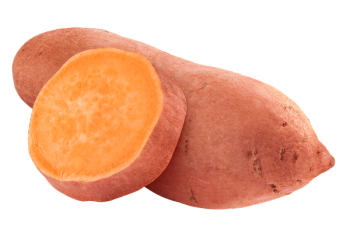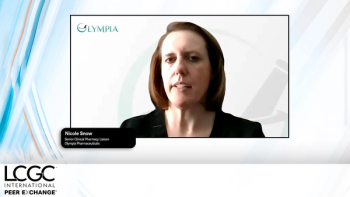
Vendor Lunchtime Workshops
Free lunchtime vendor technical workshops will be offered on Monday, Tuesday, and Wednesday from 12:45 to 1:45 pm, with two workshops occurring each day, in parallel sessions. The vendor technical workshops provide opportunities to get acquainted with the latest developments in equipment, media, and services available on the market. Symposium registrants who wish to participate in the free vendor technical workshops must pre-register early onsite at the booth of the workshop sponsor in the exhibit hall.
Free lunchtime vendor technical workshops will be offered on Monday, Tuesday, and Wednesday from 12:45 to 1:45 pm, with two workshops occurring each day, in parallel sessions. The vendor technical workshops provide opportunities to get acquainted with the latest developments in equipment, media, and services available on the market. Symposium registrants who wish to participate in the free vendor technical workshops must pre-register early onsite at the booth of the workshop sponsor in the exhibit hall.
Monday, June 20:
“Large Molecule Separations – Innovative Chromatographic Solutions from Peptides to RNA,” sponsored by Thermo Fisher Scientific
Palm Room 1-2-3, 12:45–1:45 pm
Liquid chromatography is one of the main analysis techniques for the separation and characterization of biomolecules. Though most HPLC columns are based on silica pack-beds, Thermo Fisher Scientific has a range of extra-high performance columns available that are specifically designed for complex large molecules. Their unique HPLC columns utilize a separation path filled with tightly controlled, partially porous micro-pillars. This not only allows for extra-high performance separations for digested proteins, but in addition creates an exceptionally reproducible and robust column for low-flow LC-MS. For the analysis of intact protein and antibodies, as well as for the analysis of oligonucleotides, they have a range of polymeric bead-based columns available which much more stable under elevated temperature and pH conditions, offering new possibilities in the optimization of workflows and detection methods. In this workshop, Christof Mitterer and Robert van Ling of Thermo Fisher Scientific will discuss the capabilities of these columns and discuss how they can help you overcome your challenges in biomolecule analysis.
“Atlantis Premier Columns: A New Column Family Designed to Address the Challenges of Polar Analyte Retention,” sponsored by Waters Corporation
Palm Room 7, 12:45–1:45 pm
Achieving high retention for polar analytes remains a significant challenge for many separation scientists. Polar acidic analytes are poorly retained due to ionic repulsion caused by deprotonated surface silanols found on traditional reversed-phase (RP) columns. Mixed-mode RP/anion-exchange (AX) stationary phases address this issue, but the existing RP/AX chemistries suffer from poor batch-to-batch reproducibility and limited pH ranges. HILIC is often used and the zwitterionic stationary phases gaining the most popularity due to their retention for a wide range of polar analytes, including neutrals, anions, and cations. Unfortunately, some existing zwitterionic stationary phases suffer from poor batch to batch reproducibility and limited pH stability. To overcome these challenges, Waters Corporation has developed two new column chemistries built on high surface area ethylene-bridged hybrid organic/inorganic particles. Jonathan E. Turner of Waters Corporation will discuss the utility of the two stationary phases along with key applications separating several important analyte classes.
Tuesday, June 21:
“The Role of HPLC in mRNA Analysis,” sponsored by Thermo Fisher Scientific
Palm Room 4-5-6, 12:45–1:45 pm
The landscape of chemical medicines and biologic entities used for pharmaceutical development is constantly evolving. In the last few years, strong momentum for the development and commercialization of nucleotide-based therapeutics, inclusive of oligonucleotides and mRNA, has revolutionized the landscape of therapeutics. In this seminar the Vanquish LC platform and how (with its unique technology) it is ideally suited to address the challenges of mRNA analysis. Will be presented. The seminar continues with Jacob Fairchild, Senior Scientist at Moderna, describing the potential of mRNA modalities as vaccines and therapeutics.
“It’s a Losing Game; Solving for Adverse Effects in Separations, One Surface at a Time,” sponsored by Waters Corporation
Palm Room 1-2-3, 12:45–1:45 pm
From the plates and vials used throughout sample preparation, eventually containing the final sample for analysis, to the system you use to analyze it, the opportunities for sample loss in a chromatographic workflow are abundant. The presence and magnitude of these losses is inconsistent, leading to reduced repeatability and reproducibility of your analyses, impacting sensitivity for low-level analytes, and challenging your confidence in the results to inform the decisions you need to make. Waters’ MaxPeak Premier Solutions were developed to help solve some of the most complex challenges associated with unpredictable chromatography, by focusing on the surface interactions that contribute to analyte loss and preventing those interactions from occurring, to reduce variability associated with metal-sensitive analytes, to avoid time-consuming tasks like system and column passivation, and increase sensitivity. Fundamentals of the science behind MaxPeak High Performance Surfaces, the incorporation into instrumentation, and the benefits it brings are explored by Patrick Flanagan of Waters Corporation, with application examples.
Wednesday, June 22:
“Mass Spec and Chromatographic Solutions from Biopharma Process to Product Development and Quality Control,” sponsored by Shimadzu Scientific Instruments
Palm Room 4-5-6, 12:45–1:45 pm
Analytical development of biotherapies has widely relied on liquid chromatography (LC) and mass spectrometry. Nevertheless, its implementation in GMP-compliant commercial quality control (QC) laboratories remains challenging. In this workshop, Mridul Mandal and Nivesh Mittal of Shimadzu Scientific Instruments describe the latest developments in liquid chromatography and mass spectrometry (LC-MS and MALDI) technologies that can be used to monitor biologics for commercial product release and stability testing using automated, high-throughput, and GMP compliant methods.
“Transition of 2D-LC from Research to Mainstream Pharmaceutical and Biopharmaceuticals,” sponsored by Agilent Technologies
Palm Room 1-2-3, 12:45–1:45 pm
In the last decade, multi-dimensional chromatography has emerged from being an analytical tool in the hands of few select researchers to mainstream pharmaceuticals, biopharmaceuticals, food and beverages, polymers, and other industries around the world. Since then, additional features, such as multiple heart-cutting and high-resolution sampling, have increased flexibility and optimized quantitative results while active solvent modulation facilitates challenging solvent combinations. Increased sample complexity, emergence of hybrid modalities, and compounds with multiple chiral centers have mandated the use of two-dimensional chromatography to unravel and characterize these samples. In this presentation, C.J. Venkatramani of Genentech, Inc. and Jens Meixner of Agilent Technologies will cover several examples ranging from small molecule pharmaceuticals, ADC’s, mixed modalities like antisense oligonucleotides, polypeptides, and addressing potential health agency queries.
Newsletter
Join the global community of analytical scientists who trust LCGC for insights on the latest techniques, trends, and expert solutions in chromatography.





